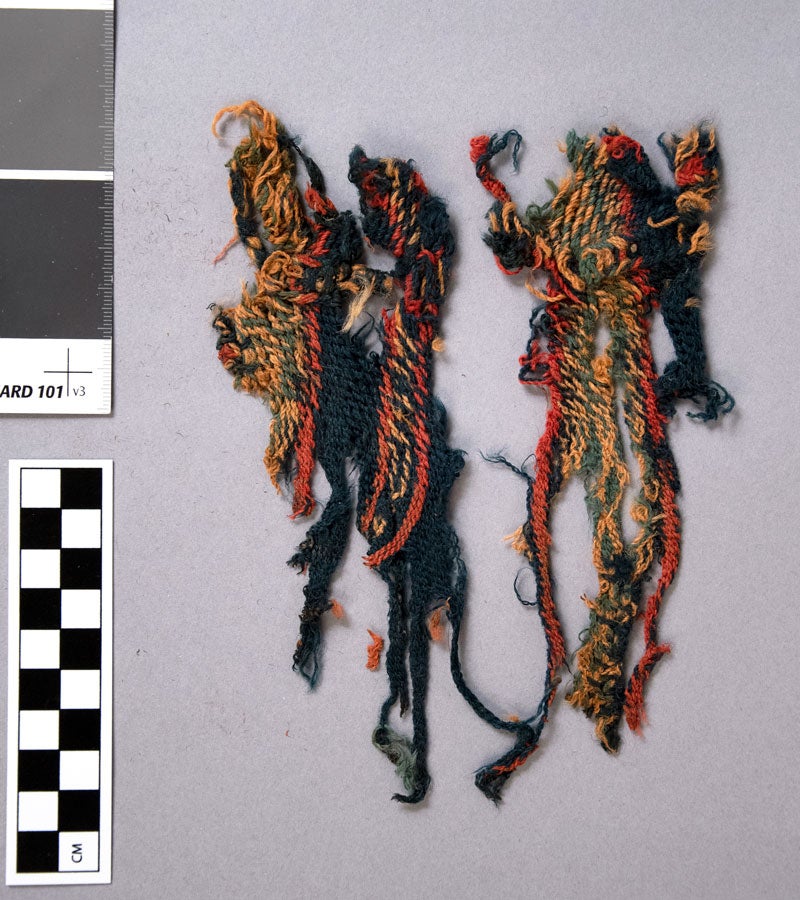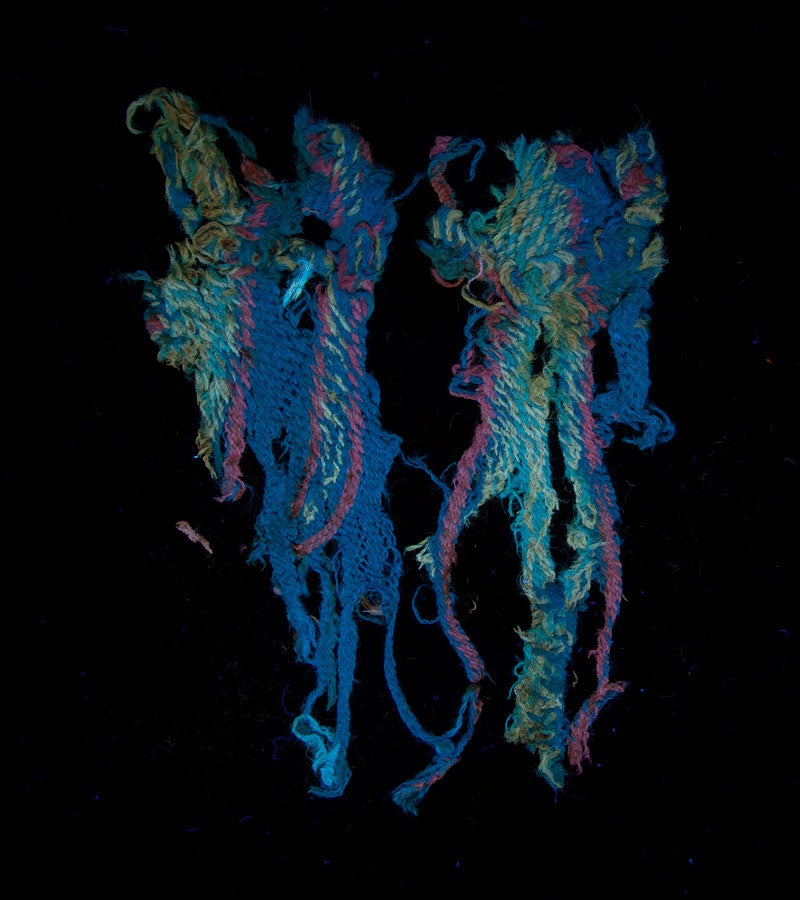By Suzanne Davis, Curator of Conservation
Hello, Ugly Object fans! Although many Kelsey objects have seen better days—and we love them all dearly, because not every ancient object can be the prettiest, oldest, biggest, or best smelling—it’s hard not to have fleeting favorites. This month I’m really feeling it for a sad little scrap of cloth that looks like the tentacled remains of a decaying jellyfish and smells of ancient garbage dump.

You can’t deny that the colors are nice, though, right? And they should be, because our friend, scrotty little jellyfish rag, was once a stylish accessory for a well-dressed woman’s up-do; it is what’s left of a sprang “cap” from Karanis, Egypt. To see how the sprang weaving technique was used to create the Greek hairnet precursors to the sprang caps / ponytail and bun covers of Roman Egypt, check out this super fun video by professional hairdresser and amateur experimental archaeologist of ancient hairstyles Janet Stephens.
As previously discussed in this blog, the Roman Egyptian decorative world was highly colorful, and this little scrap of a cap is no exception. As part of a larger NEH-funded project to study color in the Kelsey Museum’s collections, I’m looking at dyes on textiles from Karanis, and this is one of the first objects I’ve spent time with.
Using a technique called multi-band imaging (also much discussed in this blog!), I’m able to tell that the dark blue dye used in this cap came from indigo, while the green dye is a blend of indigo and a yellow colorant, possibly weld. The bright red and the bright orange, meanwhile, are from a dye made of madder root. If you’re an archaeologist or conservator who wants to know more about how MBI (sometimes called MSI) can be used to study textiles, please see this excellent open-access article by conservation scientist Joanne Dyer and her colleagues at the British Museum.




